The birthplace of indoor orchids, the main secrets of caring for them
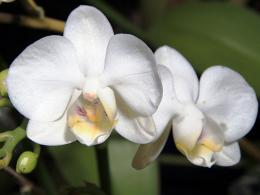
The indoor orchid is an incredibly beautiful plant, which, thanks to its attractive appearance, decorates the window sills of residential buildings and offices. The flower is quite demanding of its personality, since it was brought to us from abroad. Where is home? orchids indoors, and what are the nuances of plant care?
Content:
- Homeland of the indoor orchid
- How to care for the “queen” of indoor flowers?
- Difficulties in growing orchids
Homeland of the indoor orchid
The remains of an orchid were first mentioned in the works of the outstanding philosopher Theophrastus in the fifth century BC. The plant was found in Verona, therefore, Italy is considered the flower’s native home. Theophrastus described the plant in a systematic treatise, where he indicated that the orchid has two tubercles at the base, which are very reminiscent of human ovaries.
However, one must get to the eleventh century, in China.
The Chinese praised the indoor orchid because they believed that it was capable of expelling evil spirits from the house. It was they who “tamed” and first began to plant the plant in a container. The blooming of orchids was associated with the onset of spring holidays.
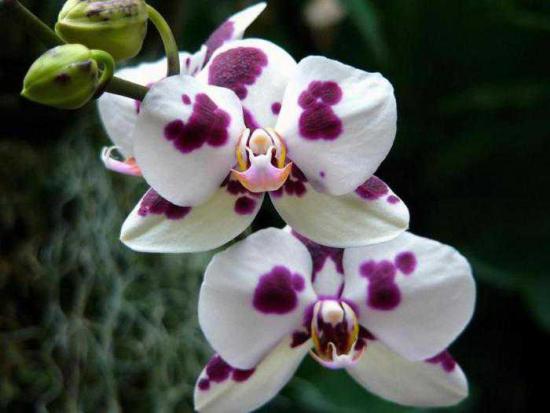
Today, orchids are so popularized that they can be found in every corner of the world. Despite all its cuteness, the flower boasts voluminous sucker roots. Thanks to the roots, the plant can “grab” onto any surface, be it a stone, a tree or earthen soil.It is noteworthy that the orchid does not dry out in the air, so there is no vital need for soil.
Amazing facts about orchids:
- There are more than 20,000 thousand species of orchids.
- The plant has flower symmetry similar to the symmetry of a human face.
- Orchid is the source of vanilla.
- Some plant species can live up to 100 years.
- This type of plant serves as the main ingredient for the preparation of an oriental drink - salep.
Over the past few years, the plant has gained wide popularity among modern gardeners. And all thanks to the variety of plant colors and long flowering. Most believe that the orchid does not do well in our climatic conditions, but it is worth saying that with proper care, you will be delighted with the unpretentiousness of this plant.
How to care for the “queen” of indoor flowers?
The indoor orchid reaches a height of 60-90 centimeters and a width of 15-20 centimeters. The color is bright and long lasting. The house flower is an evergreen plant; its leaves are distinguished by a rich green color. Proper care consists of:
- Maintaining and creating the correct humidity. In summer, there are no problems with humidity in residential buildings. In winter, a humidifier will come to your aid. You can occasionally spray the plant with warm water, this will help moisten the leaves and remove such unwanted dust.
- Regular glaze. An indoor orchid needs abundant watering, but it is worth remembering a sense of proportion. The next watering should be done only when the soil is dry. It is better to allow the flower to saturate itself with water through the root system.
- Replanting and feeding the plant. Indoor orchids need to be replanted every year in the spring.Renewing the soil and pot allows the root system to “breathe” and become saturated with minerals. It is better to feed the plant using ready-made mineral supplements. But do not “overfeed” the plant, otherwise it has a chance to burn the roots.
- Maintaining temperature conditions. In principle, an indoor orchid is a heat-loving plant. In the summer, you can place the pot on the windowsill, but you should make sure that the sun's rays do not come into direct contact with the leaves - otherwise you will face a burn. In winter you should beware of drafts and frost.
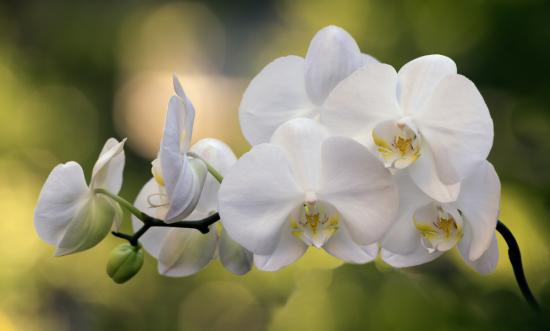
In severe frosts, the flower must be protected from being on the windowsill. If you strictly adhere to these simple rules, then caring for an indoor orchid will not be too complicated and confusing, and the owner will be able to enjoy the plant’s long flowering.
Difficulties in growing orchids
Any plant needs special care. This is due to the anatomical features of the indoor flower. What difficulties might a gardener encounter when growing indoor orchids?
Difficulties in growing orchids:
- Brown spots on leaves. Most often they indicate sunburn. The housewife should take care to darken the place where the plant stands.
- The plant grows at an angle. Most likely he doesn't have enough light. If there are no problems with lighting, the reason may lie in poor watering.
- Plaque and fungus on the leaves. In most cases, the appearance of these problems is associated with dampness and cold in the room.
If the plant does not bloom, or blooms, but very sparingly, look for the reason in insufficient feeding with mineral fertilizers or poor care. Caring for an indoor orchid can be reduced to maintaining humidity, regular watering, and proper feeding. With proper care, the plant is sure to respond to you with beautiful and long flowering.
Video about orchids at home:

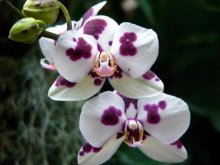



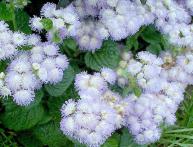

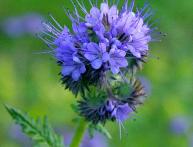

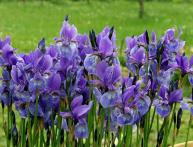

Comments
We have a Phalaenopsis orchid growing. We planted it in a plastic pot with holes in the sides and filled with tree bark. The orchid does not like excessive watering; it even has aerial roots that absorb moisture from the air. The flower should have 4 green leaves at the bottom; if there are more, then watering needs to be reduced.
I have an orchid at home, watered it on time, and it’s still in store-bought soil. The flowers began to dry out quickly. Why dont know. I didn’t stand in the sun, I couldn’t flood it. Now the branch has begun to turn yellow. How to resuscitate...
I have a lot of orchids and I noticed that each of them requires its own conditions. Oddly enough, standing on one window, one blooms perfectly, but the other does not want to. That's why I watch every flower and try to please it.